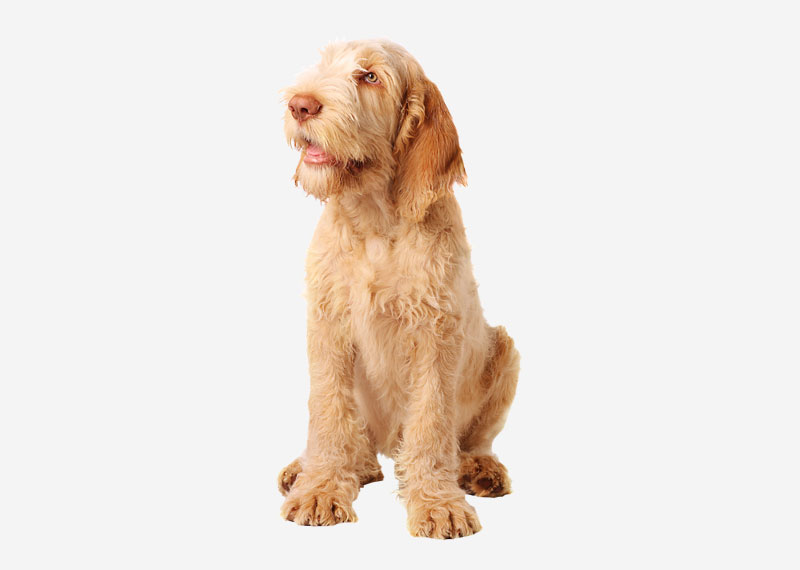The Spinone Italiano is an Italian dog breed. It was originally bred as a pointing breed. To this day, the breed still masters that purpose. The Spinone is a loyal, friendly and alert dog with a close lying, wiry coat. It is an ancient breed that can be traced back to approximately 500 BC.It is traditionally used for hunting, pointing, and retrieving game (HPR), but, in addition to that purpose, the intelligent and strong Spinone may be practically anything ranging from a companion dog to an assistance dog.
History
The breed is believed to have been developed in the Piedmont region of Italy. As the Spinone is a very ancient breed (it is believed to be one of the oldest gun dogs in existence), it is not known exactly what the origins of the breed are; there are many different theories. Some of these claim that the Spinone could have originated in Italy, France, Spain, Russia, Greece or Celtic Ireland.Some people familiar with the history of the breed claim that the Spinone descended from the now-extinct Spanish Pointer, whilst others claim that it was the ancient Russian Setter that is responsible for the breed we know today. An even more popular theory is that Greek traders brought coarse-haired setters to Italy during the height of the Roman empire, where the dogs were then crossed with various others and the modern Spinone eventually emerged.The French claim that the Spinone has descended from crosses of several French pointing breeds, whilst the Italians believe the Spinone is the ancestor of the Wirehaired Pointing Griffon, the German Wirehaired Pointer, and the Pudelpointer. Any one of these claims could be true; perhaps several of them are correct. During the Second World War, the Spinone became close to extinct. Both the war and the fact that Italian hunters had begun using other breeds (such as setters, pointing breed, and spaniels) in the hunt, whereas before it was primarily the Spinone. Many breeders had to resort to crossing the Spinone with other wire-haired breeds, such as the Boulet, Wirehaired Pointing Griffon and German Wirehaired Pointer.The breed was not officially known as "Spinone" until the early 19th century. Before then, some areas knew the breed as the "Spinoso". The breed may have been named after an Italian thorn bush, the spino, which was a favorite hiding place for small game because for larger animals it was practically impenetrable. Only thick-skinned, coarse-haired animals could fight through the branches unharmed to locate the game. The Spinone was the breed most capable of doing so, and, perhaps, therefore the name was formed.Today the Bracco Italiano is the most popular hunting dog in Italy, although the Spinone is still common. The Bracco is a racier, higher energy dog, while the Spinone excels at hunting close or in dense cover, and in retrieving from water.The Jane Percy, Duchess of Northumberland has a spinone, called Fuzzy.
Health
Like all purebred dogs, it has its share of health problems, but careful breeding is helping the situation cease.
Life expectancy
In 2004, The Kennel Club in the United Kingdom conducted a breed health survey which found the average life expectancy of Italian Spinone to be 8.7 years.
Known medical issues
*Cerebellar ataxia: Cerebellar ataxia (CA) is a deadly hereditary condition that is known to affect Spinone puppies. It is a recessive gene; therefore, both sire and dam must have been carriers for any pup in a litter to have this condition. No puppy with CA has lived past the age of 12 months to date. Most puppies that have been diagnosed with the condition are euthanised at 10–11 months. However, the AHT (UK) has developed a test for this condition. Carriers can now be identified to a 95% certainty.
*Hip dysplasia (canine): Like most large breeds, the Spinone can suffer hip dysplasia. This is when the hip bones develop abnormally. Abnormal joint motion causes early onset arthritis and makes it difficult and painful to do any exercise. If caught before 16 weeks hip dysplasia can often be surgically corrected. Dogs diagnosed with severe hip dysplasia later in life can have their ball and socket joint replaced surgically with an artificial joint.




